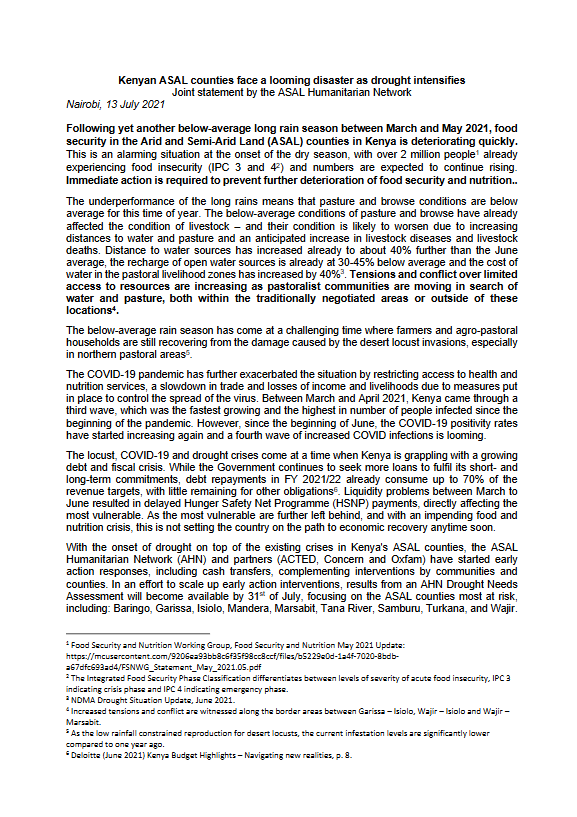ASAL Humanitarian Network (AHN)
ASAL Humanitarian Network – Early Warning and Climate Advocacy
AHN Warns of Looming Humanitarian Disaster as Drought Deepens Across Kenya’s ASALs
Press Statement – July 2021
On 13 July 2021, the ASAL Humanitarian Network (AHN) issued an early warning statement highlighting rapidly worsening drought conditions across Kenya’s Arid and Semi-Arid Lands (ASALs) following another below-average long rain season. The statement, released jointly with ACTED, Oxfam, and Concern Worldwide, warned that over two million people were already facing acute food insecurity (IPC Phases 3–4), with the situation expected to deteriorate further in the absence of urgent action.
The press release cited critical indicators:
Pasture and browse 30–45% below average,
Water costs up by 40%,
Livestock trekking distances 40% longer than normal, and
Rising inter-community conflict over water and pasture, especially along Garissa–Isiolo–Wajir–Marsabit borders.
The statement emphasized that the drought compounded existing shocks from COVID-19, desert locust infestations, and Kenya’s growing fiscal crisis, which had already disrupted the Hunger Safety Net Programme (HSNP).
AHN urged:
Immediate release of government funding to scale up relief efforts,
Anticipatory and no-regrets financing to mitigate further deterioration,
Adoption of forecast-based early action using water and food security indicators,
Strengthened inter-ministerial coordination through County Steering Groups, and
Locally led responses that build on community structures and indigenous coping mechanisms.
The July 2021 statement served as the first public alert in a chain of advocacy actions that shaped AHN’s subsequent #DroughtKE21 campaign (Nov 2021) and multi-purpose cash transfer (MPCT) drought response, marking a key turning point in locally led humanitarian coordination in Kenya’s drylands.

